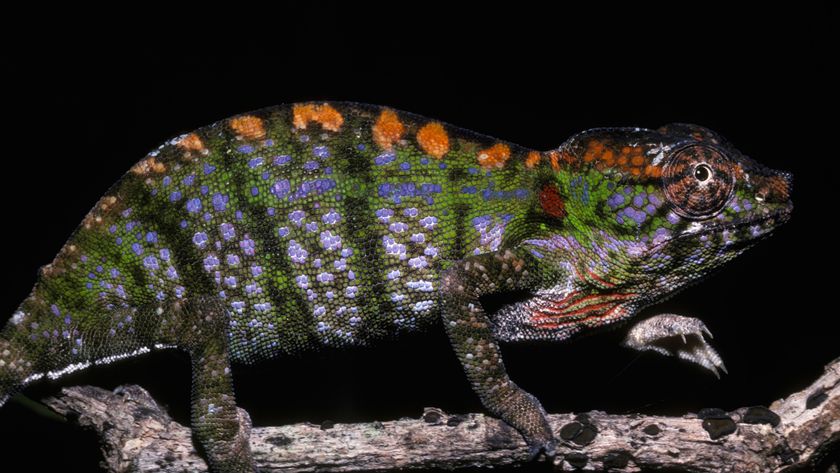New Legless Lizard Discovered

A legless lizard, knobby horned toad and mini-woodpecker have come out of hiding in Brazil, where scientists recently spotted the basket of probable new species.
With a pointed snout and missing legs, the new Bachia lizard species looks like a slithering snake. The new horned toad belongs to the genus Proceratophrys.
The clutch of suspected new species includes 12 others, including eight fish, three reptiles, an amphibian, a mammal and a bird. The animals were discovered in wooded grasslands that carpet about 20 percent of Brazil. Called the Cerrado, the grasslands once covered an area half the size of Europe, though they are now being converted to crop- and ranchlands at twice the rate of the neighboring Amazon rain forest, the expedition researchers say.
It usually takes weeks or months of careful comparative work back in the lab to definitely establish animals as new species, but biologists who spend a lot of time studying a group of animals or a region are often correct when they suspect they've found new species.
The results from the expedition, which was led by Conservation International, will be used to support the development of a management plan for a protected area, known as the Serra Geral do Tocantins Ecological Station, within the Cerrado.
"The geographic distribution of some of the species registered is restricted to the area of the ecological station," said Luís Fabio Silveira, a zoologist at the University of São Paulo. "Thus their survival depends on the good management of the protected area and its immediate surroundings."
The scientists also catalogued threatened and rare species, including a small fat-tailed mouse opossum within the genus Thylamys, an amphibian (Corythomantis greeningi) whose skin secretions cause irritation to the eyes and nose, marsh deer, a hyacinth macaw, a Brazilian merganser duck and a three-banded armadillo.
Sign up for the Live Science daily newsletter now
Get the world’s most fascinating discoveries delivered straight to your inbox.
The research was funded by Conservation Internatinoal, O Boticário Foundation for Conservation of Nature, and Research & Conservation of the Cerrado organization.
- Video: How Does a Snake Swallow a Larger Snake?
- Top 10 Species Success Stories
- Images: New Amphibian Tree of Life
Jeanna Bryner is managing editor of Scientific American. Previously she was editor in chief of Live Science and, prior to that, an editor at Scholastic's Science World magazine. Bryner has an English degree from Salisbury University, a master's degree in biogeochemistry and environmental sciences from the University of Maryland and a graduate science journalism degree from New York University. She has worked as a biologist in Florida, where she monitored wetlands and did field surveys for endangered species, including the gorgeous Florida Scrub Jay. She also received an ocean sciences journalism fellowship from the Woods Hole Oceanographic Institution. She is a firm believer that science is for everyone and that just about everything can be viewed through the lens of science.












